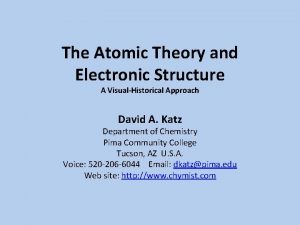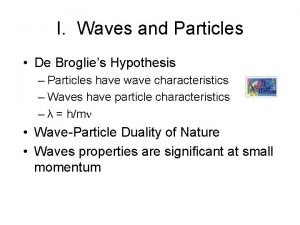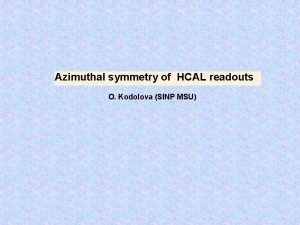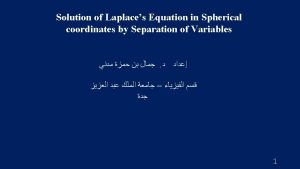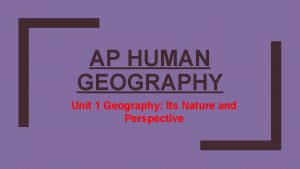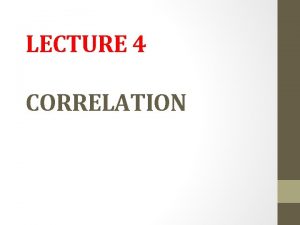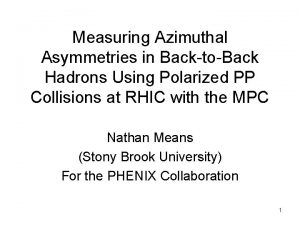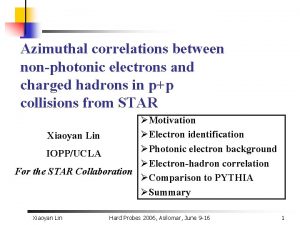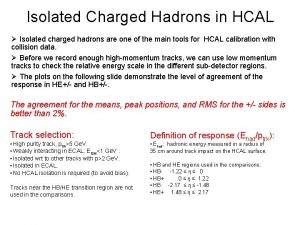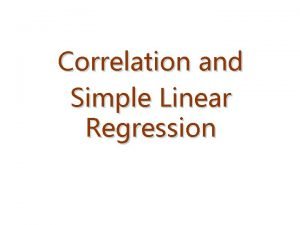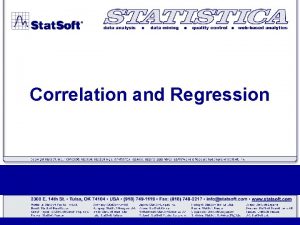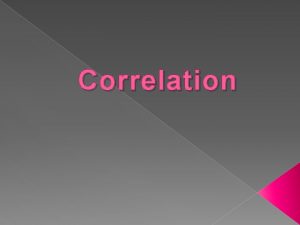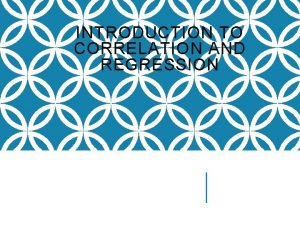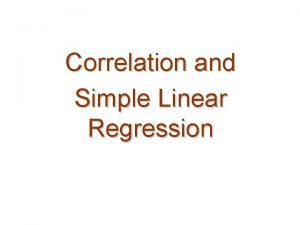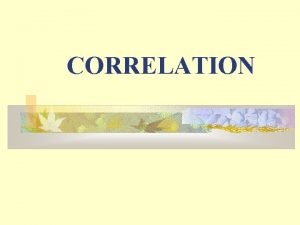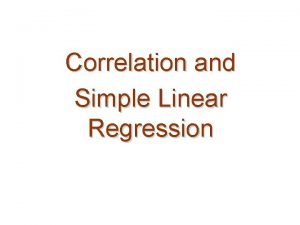Azimuthal correlation of hadrons in a partonichadronic transport
















- Slides: 16

Azimuthal correlation of hadrons in a partonic/hadronic transport model Guo-Liang Ma n Background introduction n Model introduction n Analysis method Results and discussions Conclusion n n

High Energy Nucleus-Nucleus Collisions initial state hadronic phase and freeze-out QGP and hydrodynamic expansion pre-equilibrium hadronization Physics: 1) Parton distributions in nuclei 2) Initial conditions of the collision 3) a new state of matter – Quark-Gluon Plasma and its properties 4) hadronization

Di-hadron correlations 4< p T (tr ig) <6 Ge V/c p. T(assoc) > 2 Ge. V/c Associated particles On away side: Hard associated particles → suppression p. T(assoc) > 0. 15 Ge. V/c Soft associated particles → enhancement

Soft Associated particles on Away side (thermalization) What happens to a hard probe that traverses a colored medium? <p SOFTENED T> f soften +robroaden =? = thermalization m aw ay near side away side jets thermalization? ? ? BROADENED ecay md <p. T> from mediu BROADENED SOFTENED

Mach-like cone Structure

Possible interpretations of mach-like cone structure Wake Effect or “sonic boom” Θemission= arccos (cs/c) hep-ph/0411315 Casalderrey. Solana, Shuryak, Teaney nucl-th/0406018 Stöecker Hep-ph/0503158 Muller, Ruppert nucl-th/0503028 A. K. Chaudhuri Cherenkov gluon radiation Θemission= arccos (1/n(p)) PRL 96, 172302 (2006) Koch, Majumder, X. -N. Wang Correlation of Jet with flowing medium hep-ph/0411341 Armesto, Salgado, Wiedemann

AMPT model a multi-phase transport model (1) Default AMPT (2) Melt AMPT

Mix-event Technique v (1) Get raw correlation signal in same event v (2)Get respective background by mixing events in same centrality v (3)Get correlation by removing background with ZYAM method Background Subtracted signal

correlations from AMPT (3<p. Ttrigger<6 Ge. V/c , 0. 15<p. Tassoc<3 Ge. V/c) (1) ▲melt after hadron cascade (2) ● melt before hadron cascade (3)◆ default after hadron cascade (4)★ default before hadron cascade (5) ■ Star Data 0 -5% (4 -6)*(0. 154)Ge. V/c factor=1. 58 Au+Au 200 Ge. V (0 -10%)

Jet remnants character from AMPT Au+Au 200 Ge. V

Mach-like cone Structure in AMPT model correlations in Au+Au 200 Ge. V (2. 5<p. Ttrigger<4 Ge. V/c , 1<p. Tassoc<2. 5 Ge. V/c) 0 -10% D 10 -20% 20 -40% 40 -90%

Three-particle correlations in AMPT mix-event technique background subtracted 3 -particle correlation signal

Three-particle correlation density 3 -particle correlation density definition:

Parton cascade effect on 2 - and 3 particle correlation (1)hadron cascade mechanism also can produce 2 - and 3 -particle correlation, but it can not give big enough splitting parameters. (2) the parton cascade mechanism is essential for describing the amplitude of experimental mach-like structure

Conclusion 1) Di-hadron correlations can be produced by a multi 2) 3) 4) -phase transport model(AMPT). Mach-like structure is born in the partonic process and further developed in hadronic rescattering process. hadron cascade mechanism can produce dihadron correlation, but it can not give big enough splitting parameters. Cone , deflected and center 3 -particle correlations all exist in the central Au+Au collisions, however center 3 -particle correlation become more dominant with the decreasing of Npart.

Thank you
 Hadron
Hadron Positive correlation versus negative correlation
Positive correlation versus negative correlation Positive correlation and negative correlation
Positive correlation and negative correlation Magnetic quantum number
Magnetic quantum number Friedrich hund atomic theory
Friedrich hund atomic theory De broglie hypothesis
De broglie hypothesis Azimuthal symmetry
Azimuthal symmetry Spherical coordinates formula
Spherical coordinates formula Gis definition ap human geography
Gis definition ap human geography Bioflix activity membrane transport active transport
Bioflix activity membrane transport active transport Passive transport vs active transport venn diagram
Passive transport vs active transport venn diagram Primary and secondary transport
Primary and secondary transport Active transport and passive transport
Active transport and passive transport Unlike passive transport, active transport requires *
Unlike passive transport, active transport requires * Active transport
Active transport Selectively permeable definition biology
Selectively permeable definition biology Primary active transport vs secondary active transport
Primary active transport vs secondary active transport




